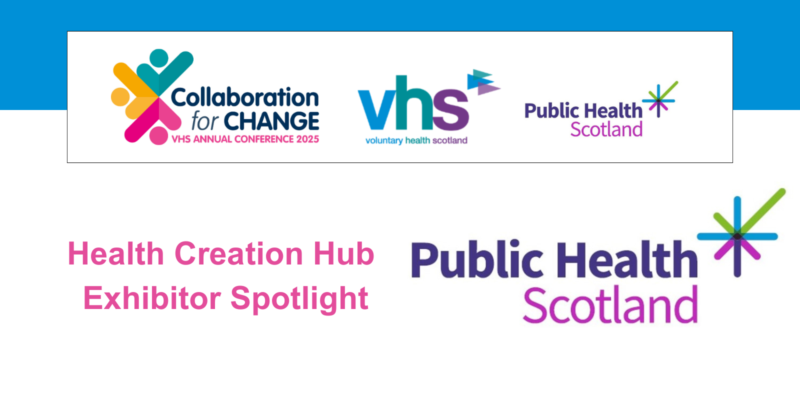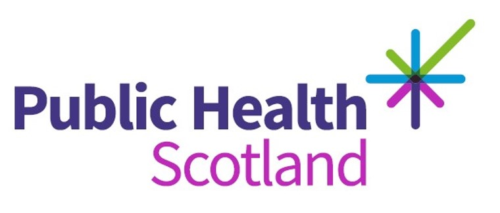
Innovation is essential in improving health and wellbeing in Scotland. Paula Reid, Transformation Service Manager, discusses Public Health Scotland’s (PHS) approach to innovation and the opportunities for a more collaboration to tackle health inequalities by working with partners across public, private and third sector.
When you hear “innovation” in public health, do you think of gadgets and apps? At Public Health Scotland (PHS) it’s much more about people, partnerships, and practical change, especially when tackling health inequalities.
Last month we launched our Innovation Framework – its built on collaboration and a shared commitment to doing things differently. We invite Scotland’s public, private and third sector partners to get involved, whether you’re a policymaker, health professional, business leader or community organisation, your insight and lived experience are vital to making Scotland healthier and fairer.
Why innovation, why now?
Scotland faces persistent poverty, an ageing population, and stubborn health inequalities. Traditional approaches aren’t enough. That’s why innovation is central to our new framework – because fresh thinking, new partnerships and bold action are what it takes to help everyone thrive.
Our approach is simple:
- Work with the right people – especially those with lived experience
- Test and learn – try new ideas, adapt, and improve
- Focus on outcomes –what truly makes a difference.
A framework for change
The Innovation Framework is designed to connect, amplify and accelerate the great work already happening across Scotland. It supports experimentation, reflection and learning, and focuses on:
- advancing innovative approaches to public health challenges
- building innovation capability and mindset across the system.
Innovation in action
Across PHS, innovation is already underway, driven by people, partnerships and a shared commitment to better health. The following four examples reflect the kind of innovation our framework is designed to support – innovation that is grounded in evidence, shaped by lived experience, and focused on what works.
- Arts and health in Aberdeen
Community-led arts sessions are improving mental wellbeing by creating safe, inclusive spaces where people can connect, express themselves and build emotional resilience. These sessions are co-designed with local communities and delivered by trusted partners, helping reduce isolation and support recovery. - Medical imaging and AI
Artificial intelligence (AI) is being used to enhance diagnostic imaging, enabling earlier and more accurate detection of health conditions. This is reducing waiting times and improving outcomes, particularly in areas with high demand and limited clinical capacity. - SPARRA4 predictive modelling
SPARRA4 uses machine learning to predict the likelihood of emergency hospital admissions. By identifying people at risk earlier, it enables more targeted, preventative support – helping shift the system from reactive care to proactive intervention. - Collaboration for Health Equity in Scotland (CHES)
CHES supports local authorities to apply the Marmot principles in practice. It helps teams use data to understand inequalities, identify barriers, and co-design solutions with communities – accelerating place-based action to improve health equity.
Hear more from my colleagues talking about these examples.
Cervical cancer elimination: innovation in action
One of our first major projects under the framework is driving the elimination of cervical cancer in Scotland. The goal: meet the WHO’s 90-70-90 targets by 2030 (90% HPV vaccination, 70% screening, 90% treatment).
These targets are achievable, but only if we address the growing deprivation gap in vaccination and screening. Without targeted innovation, cervical cancer may persist in our most deprived communities.
What’s different this time?
- Breaking down silos – bringing teams together to share knowledge and focus on equity
- Putting equity at the centre –mapping gaps and co-designing solutions to reach those most in need
- Learning as we go –building a culture of evaluation, adaptation and shared learning.
The result? Faster, fairer progress towards elimination and a stronger, more collaborative public health system.
Beyond cervical cancer
Innovation is also driving work on healthy weight, income maximisation, and place-based approaches like CHES. The third sector is central to this – your organisations are the bridge to communities, the champions of lived experience, and the spark behind much of what works.
What makes innovation work?
It’s not about being flashy. It’s about curiosity, openness, and collaboration. At PHS, we’re risk-aware, not risk-averse, and we know that governance, measurement and learning are key to making innovation stick.
Let’s work together
We want to hear from you. Whether you’re leading innovative work or just starting out, your ideas, questions and challenges matter.
Get involved. Share your insight. Collaborate with us.
To learn more, visit our website or contact the team by email.
Together, we can make Scotland healthier and fairer – one innovation at a time.
Paula Reid is Service Manager (Transformation) at Public Health Scotland.
 VHS is pleased to have Public Health Scotland as our collaboration partner for the VHS Annual Conference ‘Collaboration for Change’ on October 28th, 2025. Make sure you pop by their stand at our Health Creation Hub.
VHS is pleased to have Public Health Scotland as our collaboration partner for the VHS Annual Conference ‘Collaboration for Change’ on October 28th, 2025. Make sure you pop by their stand at our Health Creation Hub.
